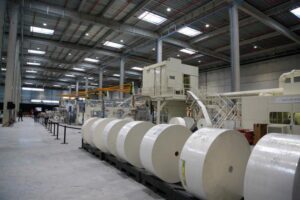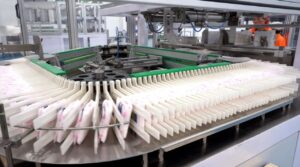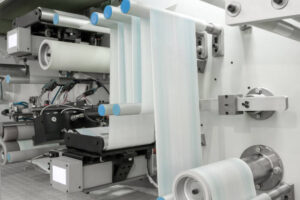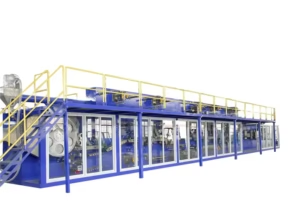Choosing the Right Fabric: Non-Woven vs. Woven
Introduction
In the world of textiles, choosing the right fabric for your project is crucial. Two prominent options are non-woven and woven fabrics, each with unique characteristics and applications. In this blog post, we will delve into the differences between non-woven and woven fabrics, helping you make an informed decision for your specific needs.
Non-Woven Fabrics
Non-woven fabrics are produced by bonding fibers together without the need for weaving or knitting. This process results in a fabric that is lightweight, breathable, and has a unique texture.
Types of Non-Woven Fabrics
There are various types of non-woven fabrics, including:
– Spunbond fabric: Made from continuous fibers that are bonded together, resulting in a strong and durable fabric.
– Meltblown fabric: Made from fine fibers that are blown onto a surface, creating a soft and absorbent fabric.
– Airlaid fabric: Made from fibers that are suspended in air and then deposited onto a surface, resulting in a bulky and absorbent fabric.
Properties of Non-Woven Fabrics
Non-woven fabrics possess several notable properties:
– Lightweight: They are typically lighter than woven fabrics, making them ideal for applications where weight is a concern.
– Breathable: Their porous structure allows air to pass through, making them suitable for garments and medical applications.
– Durable: Spunbond non-woven fabrics, in particular, are known for their strength and durability.
– Disposable: Many non-woven fabrics are designed to be disposable, making them convenient for single-use applications.
Applications of Non-Woven Fabrics
Non-woven fabrics find applications in a wide range of industries, including:
– Medical: Surgical gowns, masks, and bandages
– Hygiene: Wipes, diapers, and sanitary pads
– Industrial: Filtration, packaging, and insulation
– Consumer: Clothing, bags, and home furnishings
Woven Fabrics
Woven fabrics are created by interlacing two sets of yarns perpendicularly, forming a grid-like structure. This process results in a fabric that is strong, durable, and has a smooth surface.
Types of Woven Fabrics
There are numerous types of woven fabrics, including:
– Plain weave: The simplest weave, where yarns are interlaced over and under in a regular pattern.
– Twill weave: A diagonal pattern is created by interlacing yarns over and under multiple yarns.
– Satin weave: A smooth and lustrous fabric is produced by interlacing yarns over and under several yarns.
Properties of Woven Fabrics
Woven fabrics exhibit distinct properties:
– Strong: The interlocking yarns provide strength and durability.
– Durable: Woven fabrics can withstand wear and tear, making them suitable for long-lasting applications.
– Smooth: The interlacing of yarns creates a smooth and even surface.
– Versatile: Woven fabrics can be made from a variety of materials, including natural fibers (e.g., cotton, wool) and synthetic fibers (e.g., polyester, nylon).
Applications of Woven Fabrics
Woven fabrics are used in a vast array of applications, such as:
– Clothing: Shirts, pants, dresses, and suits
– Home furnishings: Curtains, upholstery, and bedding
– Industrial: Canvas, tarpaulins, and conveyor belts
– Automotive: Seat covers, headliners, and airbags
Non-Woven vs. Woven: Which is Right for You?
The choice between non-woven and woven fabrics depends on the specific requirements of your project. Consider the following factors:
– Weight: Non-woven fabrics are typically lighter than woven fabrics.
– Breathability: Non-woven fabrics are more breathable than woven fabrics.
– Durability: Woven fabrics are generally more durable than non-woven fabrics.
– Cost: Non-woven fabrics are often more cost-effective than woven fabrics.
– Application: The intended use of the fabric will determine which type is most suitable.
Conclusion
Non-woven and woven fabrics offer distinct advantages and applications. By understanding the differences between these two types of fabrics, you can make an informed decision that meets the specific needs of your project. Whether you require lightweight and breathable non-woven fabrics or strong and durable woven fabrics, Favourite Fab has a wide selection to choose from.
FAQs
Q: Which fabric is better for medical applications?
A: Non-woven fabrics, particularly spunbond non-woven fabrics, are preferred for medical applications due to their breathability, disposable nature, and resistance to fluids.
Q: What is the difference between spunbond and meltblown non-woven fabrics?
A: Spunbond non-woven fabrics are made from continuous fibers, resulting in a strong and durable fabric. Meltblown non-woven fabrics are made from fine fibers, creating a soft and absorbent fabric.
Q: Can woven fabrics be used for disposable applications?
A: While woven fabrics are generally more durable than non-woven fabrics, some lightweight woven fabrics can be used for disposable applications, such as certain types of clothing or packaging.
Contact Us
For more information on non-woven and woven fabrics or to place an order, please contact Favourite Fab at sale@favouritehub.com or WhatsApp at 95288811566.





































We Do Business On Trust.Our Nonwoven fabric Business is Built on trust. Trust starts with Transparency.
Mr.Ramniwas Garg Founder Of Favourite Group